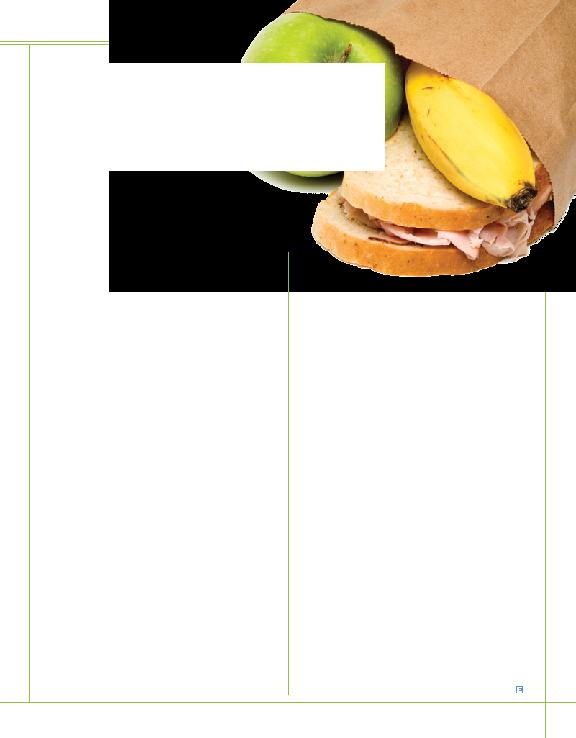
fuel", and this concept cannot be emphasized
enough when talking about the food that children
young and old, school children need an adequately
planned lunch that includes a combination of healthy
carbohydrates, proteins, and fats to provide energy for
concentration and focus during the afternoon's learning
activities. Much has been written in recent years about
the quality of school lunches, and popular food choices
such as pizza, cheeseburgers, hot dogs, chicken nuggets,
potato chips, and soft drinks contain a high percentage
of saturated fat and empty calories. These types of foods
eaten on a regular basis lead to weight gain and the
concomitant chronic diseases of diabetes and heart
disease. Often missing in the meal plan of many children's
school lunches are colorful fruits, vegetables, and
whole grains.
the school lunch is packed at home or bought in the
cafeteria, when food choices include lower calorie, lower
saturated fat and total fat options, the risk for weight gain
and obesity is decreased. In addition, proper food choices
will feed the brain with nutrients necessary to promote
alertness and avoid the sluggish and tired feeling that
is often present in children during the afternoon. The
promotion of healthy lunches by parents, teachers, and
administrators will also teach children the role of healthy
food in a fit and balanced lifestyle.
a variety of healthy choices, many children choose the
less nutritious options because that is what they are used
to eating at home. There needs to be an emphasis on
nutrition education for children and families, so that they
devoid lunches for long term. While it may be a budgetary
debate, school districts should only offer foods that are
nutritious, whole, and fresh. The obesity epidemic in this
country is proof that lunches filled with fries, sweets, and
sugary drinks are not contributing to health and wellness.
step in the right direction toward healthier school lunches
for children. The act, which states that more children will
have access to healthy foods at lunch, provides access to
sample menus that include whole grains such as whole
wheat spaghetti, whole wheat pizza, and whole wheat
rolls and also a variety of colorful fruits and vegetables.
For example, menus include at least three different colors
in a lunch (cauliflower, kiwi, broccoli, green beans, and
tomato spaghetti sauce as one example). Entrees are
oven-baked instead of fried. Low-fat cheese and milk are
included, and fruits are served as desserts.
whole grains, fresh fruits and vegetables with a variety
of colors, lean meats and cheeses, and minimal sugars
and fats. Foods should contain vitamins, minerals, and
phytochemicals to promote health and provide energy.
A sandwich on whole wheat bread with turkey, cheese,
lettuce or other vegetable; fresh fruit or vegetable;
whole grain crackers, and milk will provide satiety and
concentration for the afternoon. Parents can teach their
children how to make their own nutritious lunch the night
before and put it in the refrigerator until morning.
School Lunch